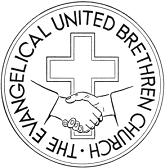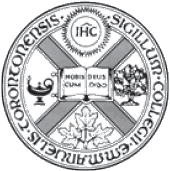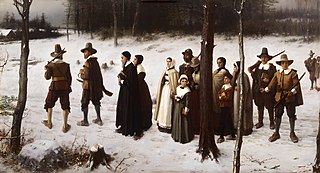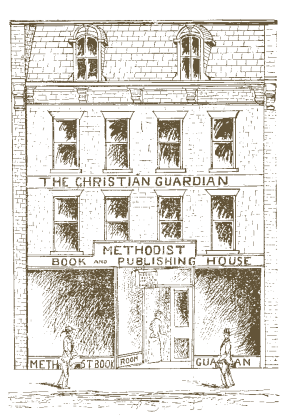Methodism, also called the Methodist movement, is a branch of Protestantism whose origins, doctrine and practice derive from the life and teachings of John Wesley. George Whitefield and John's brother Charles Wesley were also significant early leaders in the movement. They were named Methodists for "the methodical way in which they carried out their Christian faith". Methodism originated as a revival movement within Anglicanism originating out of the Church of England in the 18th century and became a separate denomination after Wesley's death. The movement spread throughout the British Empire, the United States and beyond because of vigorous missionary work, and today has about 80 million adherents worldwide.
The Methodist Episcopal Church (MEC) was the oldest and largest Methodist denomination in the United States from its founding in 1784 until 1939. It was also the first religious denomination in the US to organize itself nationally. In 1939, the MEC reunited with two breakaway Methodist denominations to form the Methodist Church. In 1968, the Methodist Church merged with the Evangelical United Brethren Church to form the United Methodist Church.
The Methodist Episcopal Church, South was the American Methodist denomination resulting from the 19th-century split over the issue of slavery in the Methodist Episcopal Church (MEC). Disagreement on this issue had been increasing in strength for decades between churches of the Northern and Southern United States; in 1845 it resulted in a schism at the General Conference of the MEC held in Louisville, Kentucky.
The Holiness movement is a Christian movement that emerged chiefly within 19th-century Methodism, and to a lesser extent influenced other traditions such as Quakerism, Anabaptism, and Restorationism. The movement is historically distinguished by its emphasis on the doctrine of a second work of grace, generally called entire sanctification or Christian perfection and by the belief that the Christian life should be free of sin. For the Holiness movement, "the term 'perfection' signifies completeness of Christian character; its freedom from all sin, and possession of all the graces of the Spirit, complete in kind." A number of evangelical Christian denominations, parachurch organizations, and movements emphasize those beliefs as central doctrine.

The Evangelical United Brethren Church (EUB) was a North American Protestant denomination from 1946 to 1968 with Arminian theology, roots in the Mennonite and German Reformed, and communities, and close ties to Methodism. It was formed by the merger of the Evangelical Church and the Church of the United Brethren in Christ. The United Brethren and the Evangelical Association had considered merging off and on since the early 19th century because of their common emphasis on holiness and evangelism and their common German heritage. In 1968, the United States section of the EUB merged with the Methodist Church to form the United Methodist Church, while the Canadian section joined the United Church of Canada.
The Confessing Movement is a largely lay-led theologically conservative Christian movement that opposes the influence of theological liberalism and theological progressivism currently within several mainline Protestant denominations and seeks to return them to its view of orthodox doctrine, or form a new denomination and disfellowship (excommunicate) them if the situation becomes untenable. Those who eventually deem dealing with theological liberalism and theological progressivism within their churches and denominations as not being tenable anymore would later join or start Confessional Churches and/or Evangelical Churches that continue with the traditions of their respective denominations and maintaining orthodox doctrine while being ecclesiastically separate from the Mainline Protestant denominations.
Religion in Canada encompasses a wide range of beliefs and customs. While Christianity was once central and integral to Canadian culture and daily life, Canada has become a secular and post-Christian state. Although the majority of Canadians consider religion to be unimportant in their daily lives, they still believe in God. The practice of religion is generally considered a private matter throughout society and the state. The constitution of Canada refers to God and the monarch carries the title of Defender of the Faith, however Canada has no official church and the government is officially committed to religious pluralism.
The Primitive Methodist Church is a Methodist Christian denomination within the holiness movement. It began in England in the early 19th century, with the influence of American evangelist Lorenzo Dow (1777–1834).

Emmanuel College is the theological college of Victoria University in the University of Toronto. Affiliated with the United Church of Canada, it is also a member institution of the Toronto School of Theology. The college's principal is HyeRan Kim-Cragg.
The Free Methodist Church is a denomination of Methodism, which is a branch of Protestantism. It was founded in 1860 in New York by a group, led by B. T. Roberts, who was defrocked in the Methodist Episcopal Church for criticisms of the spiritual laxness of the church hierarchy. The Free Methodists are so named because they believed it was improper to charge for better seats in pews closer to the pulpit. They also opposed slavery and supported freedom for all slaves in the United States, while many Methodists in the South at that time did not actively oppose slavery. Beyond that, they advocated "freedom" from secret societies, which had allegedly undermined parts of the Methodist Episcopal Church.
Methodist views on the ordination of women in the rite of holy orders are diverse.

Protestantism is the largest grouping of Christians in the United States, with its combined denominations collectively comprising about 43% of the country's population in 2019. Other estimates suggest that 48.5% of the U.S. population is Protestant. Simultaneously, this corresponds to around 20% of the world's total Protestant population. The U.S. contains the largest Protestant population of any country in the world. Baptists comprise about one-third of American Protestants. The Southern Baptist Convention is the largest single Protestant denomination in the U.S., comprising one-tenth of American Protestants. Twelve of the original Thirteen Colonies were Protestant, with only Maryland having a sizable Catholic population due to Lord Baltimore's religious tolerance.

The history of Methodism in the United States dates back to the mid-18th century with the ministries of early Methodist preachers such as Laurence Coughlan and Robert Strawbridge. Following the American Revolution most of the Anglican clergy who had been in America came back to England. John Wesley, the founder of Methodism, sent Thomas Coke to America where he and Francis Asbury founded the Methodist Episcopal Church, which was to later establish itself as the largest denomination in America during the 19th century.

Samuel Dwight Chown was a Methodist minister who led the Methodist Church of Canada into the United Church of Canada in 1925.

The Christian Guardian was a Wesleyan Methodist journal founded in Upper Canada in 1829. The first editor was Egerton Ryerson. It ceased publication in 1925 when the Methodist Church of Canada merged with the Presbyterians and Congregationalists to form the United Church of Canada, and merged their journals to create The New Outlook, later renamed the United Church Observer.

Sydenham Street United Church, formerly Sydenham Street Methodist Church, is a church in Kingston, Ontario, Canada that dates to 1852. It was originally a Methodist church, but since 1925 has belonged to the United Church of Canada.
David Savage (1830–1893) was an English-born Methodist minister who worked as a pastor and evangelist in Upper Canada for many years. In the 1880s he adapted techniques from the Salvation Army and began to recruit and train bands of young men or women to assist in his evangelical services. Often they went on to become evangelists themselves.

Albert Carman was a Canadian Methodist minister and teacher who became head of the Methodist Church in Canada.








